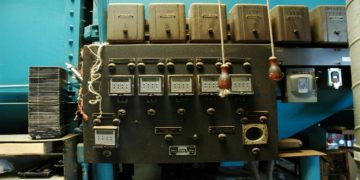You know every contractor has been there; you pour hours into a job, only to realize the profit margin shrank to almost nothing because the quote wasn’t quite right. Maybe labor ran over. Maybe materials cost more than expected. Or maybe you underpriced simply to win the work. When the quoting is not accurate, it turns a promising job into a headache.
It is not wrong to say that for contractors, quoting is both a business card and a contract preview; it shows clients how reliable, professional, and trustworthy you are before a single nail is hammered.
Why Accurate Quotes Win Jobs
Clients don’t just look at numbers; they look for confidence. When you hand over a polished, accurate quote, it tells them: This contractor knows what they’re doing. It builds instant trust because a well-prepared quote feels transparent, realistic, and fair.
On the other hand, vague or sloppy quotes raise red flags. If a customer can’t see where their money is going, they assume hidden costs will pop up later. And if your price seems suspiciously low compared to others, it can actually work against you. People often equate “too cheap” with “poor quality.”
That’s why many contractors are turning to digital tools to keep their quotes consistent and professional. A quoting app lets you pull in supplier prices, create branded templates, and send estimates on-site. The result? Faster approvals, fewer errors, and a stronger chance of closing the deal before competitors get in the door.
What Accurate Quoting Looks Like: Key Elements
So, what separates an accurate quote from a risky one? It comes down to a few key elements that cover scope, costs, and presentation.
- A clear scope of work
- Updated cost data
- Allowances and contingencies
- Transparency in pricing
- Professional presentation
Together, these elements transform a quote from a “guesstimate” into a reliable roadmap for success.
How a Good Quoting Workflow Reduces Error
Most experienced contractors can fall victim to human error when relying on manual methods like paper notes or scattered spreadsheets. Miss one decimal point or forget a line item, and your profit margin evaporates. That’s where a structured quoting workflow makes all the difference.
- Automation saves time and reduces mistakes.
- Real-time cost data keeps quotes current.
- Integration connects quotes to jobs and invoices.
- Mobile quoting builds trust faster.
Best Practices: A Contractor’s Quoting Checklist
Now that we’ve covered why accuracy matters and how workflows help, let’s get practical.
- Do a site visit whenever possible. Measurements, photos, and first-hand observations reveal details you won’t catch from a quick phone call.
- Document assumptions. If you’re pricing based on specific conditions, write that down in the quote.
- Factor in all labor costs. Don’t just count direct hours; include travel, preparation, and admin time.
- Include overhead and profit margin explicitly. Treat them as non-negotiable line items, not “leftovers.”
- Use updated supplier prices. Outdated costs are one of the fastest ways to erode profits.
- Add a contingency buffer. Even 5–10% helps cover surprises without shocking the client.
- Set an expiry date. This protects you from material price hikes and keeps clients motivated to respond quickly.
Conclusion
Nothing inspires confidence more than a clear, accurate, professional quote. That’s why accurate quoting isn’t just another task on your to-do list; it’s your secret weapon.
David Prior
David Prior is the editor of Today News, responsible for the overall editorial strategy. He is an NCTJ-qualified journalist with over 20 years’ experience, and is also editor of the award-winning hyperlocal news title Altrincham Today. His LinkedIn profile is here.











































































